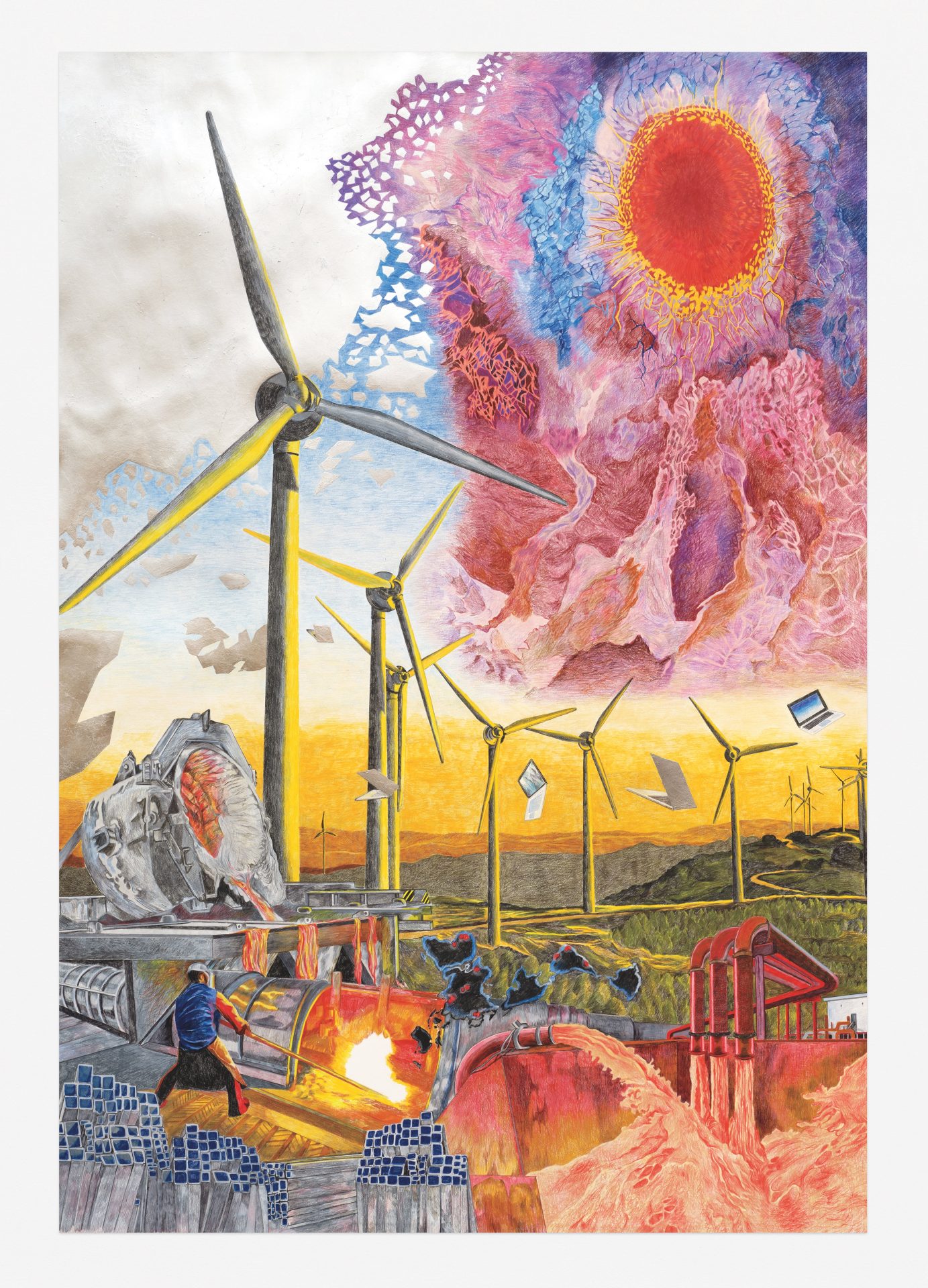
Once upon a time, a half century or so ago, America’s corporate leaders—an ethnically homogenous, conservative group of guys—routinely mobilized for the sake of progress. Moderate and pragmatic, they formed important coalitions that helped improve public policy and advance vital national goals. But in the last several decades, they’ve morphed into a herd of cats—parochial, bumbling, and completely ineffective at influencing policy in a positive way. We’ve gone from dollar-a-year men and public-minded business executives to Donald Trump and Mitt Romney, the CEO candidate who campaigned on self-deportation for immigrants and tearing up the safety net. Rockefeller Republicans? Try Tea Party Republicans. What we’ve seen is nothing less than “the abdication of responsibility by a group that in earlier decades played a constructive role in both presenting solutions to national problems and in maintaining a moderate cast to our politics,” writes sociologist Mark S. Mizruchi in his lament for a bygone consensus. “The top of the corporate world in the twenty-first century lacks the ability to act collectively that its predecessors of the postwar period exhibited.”
In The Fracturing of the American Corporate Elite, Mizruchi has written a thumbnail history of the interaction between big business organizations—outfits like the Chamber of Commerce, the Committee for Economic Development, the Business Roundtable—and government over the past century. Doing so is necessary, but nowhere near sufficient, to illuminate the changes in the relationship between America’s corporate leaders and the country at large. And while he makes several good points about the evolution of corporate leadership, he misses or overlooks a few obvious trends that pack a powerful explanatory punch.
In Mizruchi’s view, businessmen evolved into pragmatic beings by the mid-twentieth century because they were subject to forces such as a “relatively active and highly legitimate state” and a well-organized and powerful labor movement. Yes, there were periods of deep antagonism, such as Theodore Roosevelt’s trust busting and Franklin Roosevelt’s New Deal. But business leaders, working through groups like the National Civic Federation, founded in 1900, actually helped establish many of the features that turned the United States into a modern economy in the first few decades of the twentieth century: the Federal Reserve, child-labor laws, the provision of health care, pensions, and other benefits. While CEOs generally resisted big chunks of the New Deal, they made their peace with it rather quickly. A Fortune survey in 1939 found that only 17 percent of executives wanted to repeal Social Security.
The era of good feelings continued through World War II, during which leaders of business and government joined forces to mobilize the nation’s productive capacity behind the war effort, and into the Cold War. During the administration of Dwight Eisenhower—the ultimate pragmatic leader—the Committee for Economic Development, peopled by senior executives at companies like Studebaker, Coca-Cola, Goldman Sachs, and Scott Paper, emerged as an important force. “Its members expressed a degree of moderation—especially with regard to the role of government in the economy—that was not approached either before or since,” Mizruchi writes. This group pushed for the Marshall Plan and backed bold new programs to boost American science education and research funding. In the 1960s, Mizruchi observes, the corporate elite was also generally supportive of many Great Society programs. “As Lyndon Johnson launched the most ambitious set of social legislation since the New Deal, there was virtually no public opposition from large corporations,” Mizruchi writes. In 1971, the Committee for Economic Development published a document titled Social Responsibilities of Business Corporations. This represented, in Mizruchi’s judgment, the “culmination of the moderate social orientation of the corporate elite in the postwar period.”
But like the New Deal political coalition, this entente began to unravel in the 1970s. Angered by regulations promulgated by the Environmental Protection Agency and other federal bureaucracies, and concerned by the rising tide of antibusiness attitudes, corporate America began to push back. New, combative Washington, DC–based business groups, such as the American Enterprise Institute, the Heritage Foundation, and the Business Roundtable, gained traction and funding. Started in 1972, the Business Roundtable was explicitly a lobbying organization. Its first major achievement was blocking President Jimmy Carter’s proposal to create a Consumer Protection Agency.
A school of sociological thought holds that individual actors, once they achieve their political goals, drift off in other directions. And the catastrophic successes of the 1980s, Mizruchi argues, helped spur a greater fragmenting of the corporate elite. Ronald Reagan busted unions, eviscerated the EPA, and passed broad-based tax cuts. As the social and cultural environment became more hospitable to big business, “the corporate elite was becoming less politically cohesive and less willing to maintain a broad, moderate approach toward the larger society.” Meanwhile, a revolution in the markets—leveraged buyouts, shareholder activists—left CEOs feeling insecure and less able to focus on public policy. Among sitting CEOs of Fortune 500 firms in 1980, the mean number of years they had been in office was 9.4; by 2002, the number would fall to 6.8.
As a result, Mizruchi contends, the successes of the 1950s and ’60s were replaced by epic fails. Take health care. Despite the inexorable rise of costs that threatened profits, company CEOs were unable to unite behind comprehensive reform. Reflecting on industry’s inability to play a useful role in the 1993 debate over Bill Clinton’s push for universal health care, Mizruchi writes, “The corporate elite proved at this point, and years later, with the Obama plan, that it was incapable of solving not only societal problems but even its own.” In 2011, as Washington struggled with the crippling debt-ceiling debate, the Business Roundtable couldn’t come up with any ideas about tax increases or tax reform. “The Roundtable’s retreat from responsibility on the issue of taxes is emblematic of the decline of the American corporate elite,” Mizruchi writes.
Agreed. But the corporate elite is made up of living, breathing individuals. I’ve spent a good chunk of the past twenty years in their company. And you can learn a lot about the way they roll from following a CEO around for the day, or going to Davos, or sitting in the CNBC greenroom with one. The Wall Street Journal and Financial Times frequently provide much more useful windows into the anthropology of CEOs than do the records of the Business Roundtable.
A deeper understanding of today’s CEOs, I believe, would provide a more rounded view of their inability to present a united front on rational policy changes. To begin with, as government has grown in size and scope, and as more companies have become government contractors or dependent on government support and subsidies—the health-care sector, agriculture, the mortgage complex, defense contractors, technology firms, the infrastructure industry, energy and clean tech—CEOs have come to want very different things from government. In addition, centrists have generally disappeared from the political culture for a variety of cultural and demographic reasons. So it’s no surprise that there are fewer moderate CEOs out there.
But Mizruchi really whiffs on the phenomenon that has transformed corporate life in the past fifty years: globalization. The expansion of trade and the continual opening of new markets have really changed what it means to be a large American corporation, and what it means to run one. The typical member of the S&P 500 gets about half of its revenues from overseas operations. For America’s largest companies—organizations like McDonald’s, Coca-Cola, Intel, Microsoft, Boeing—the proportion is closer to 80 percent. That wasn’t the case in the ’50s. What’s more, virtually all the growth that big companies have seen in recent years has come via international expansion. Many of our iconic firms are American in name and heritage only. So in strictly economic terms, one could forgive a CEO for not being particularly interested or invested in health-care policy in what is now a rump market.
Globalization has also significantly altered the talent pool. Could it be that today’s “American” CEOs are less cohesive because they’re a much more diverse crowd than the gang of blue-chip dudes who ran the show in the ’50s? The CEO of Coca-Cola is Muhtar Kent, who was born in the United States but raised in Turkey; PepsiCo is run by Indra Nooyi, an Indian woman who came to America in her twenties. Burger King’s CEO is Brazilian, Chrysler’s CEO is Italian, and Morgan Stanley’s CEO is Australian. Forget about influencing policy; many of today’s leading US CEOs can’t even vote here. When it comes to policy, they have bigger fish to fry than a grand bargain on the US budget—like providing fresh water in Africa, creating greater financial inclusion in India, or combating global warming and aids. And they all know that within a few years they’ll be gone, perhaps working in a different country. Mizruchi’s book might have been more on point if it were titled The Globalization of the American Corporate Elite.
Daniel Gross is a columnist and business editor at Newsweek and the Daily Beast. His most recent book is Better, Stronger, Faster: The Myth of American Decline . . . and the Rise of a New Economy (Free Press, 2012).






